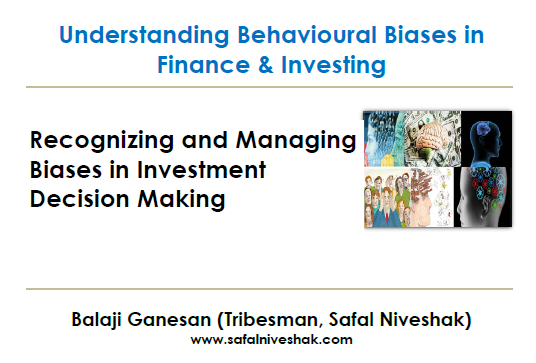Behavioral Biases in Investing
Post on: 16 Март, 2015 No Comment

There are several natural human tendencies which, when unrecognized by an investor, can be quite damaging to investment returns. Well explain a few of these harmful behavioral biases and show how a properly maintained, risk-appropriate portfolio can help to counteract them.
Overconfidence We (humans) tend to overestimate our own mental and physical abilities. Studies show that 8 out of 10 college students believe that they are better-than-average drivers, and 7 out of 10 Americans believe that they are smarter than the average American. Overconfidence can be helpful in some areas of life, but investing is not one of them. For investors, overconfidence in ones ability to beat the market leads to frequent trading, higher expenses, and poor performance.
How can you keep overconfidence from negatively affecting your portfolio returns? First, construct a portfolio based on your risk profile. not based on what you think the market (or a particular sector) is going to do. Our risk questionnaire can help you do just that. Second, stick with the plan. Include specific rebalancing criteria in your Investment Policy Statement so that you dont deviate too far from your target asset allocation .
Loss Aversion Loss aversion causes us to feel more pain from a $1,000 loss than we feel happiness from a $1,000 gain. As a result, we tend to hold losing investments for too long (in order to avoid the pain associated with realizing the loss) and sell winning investments too soon. Both of these practices destroy investment returns.
In order to fight your tendency to be loss averse, remove your ability to make harmful buy/sell decisions by instituting a rebalancing program. Rebalancing your portfolio when it strays from your ideal allocation forces you to buy low and sell high; theres no need for guesswork! See the Rebalancing tab for more information.
Herding Following the herd can seem like a safe bet, but nothing could be further from the truth when it comes to investing. During the late 1990s and early 2000s, countless sophisticated investors ignored the fundamentals and invested in the latest dot-com, only to see their wealth destroyed soon thereafter. Herd behavior is so damaging because it often causes investors to buy at the worst possible time (the top of the market) and sell at the worst possible time (the bottom).
It can be hard to sit idly by while it seems like your friends are getting rich on the latest investment fad, but youre better off tuning out the noise and sticking with a diversified. risk-appropriate investment plan.














